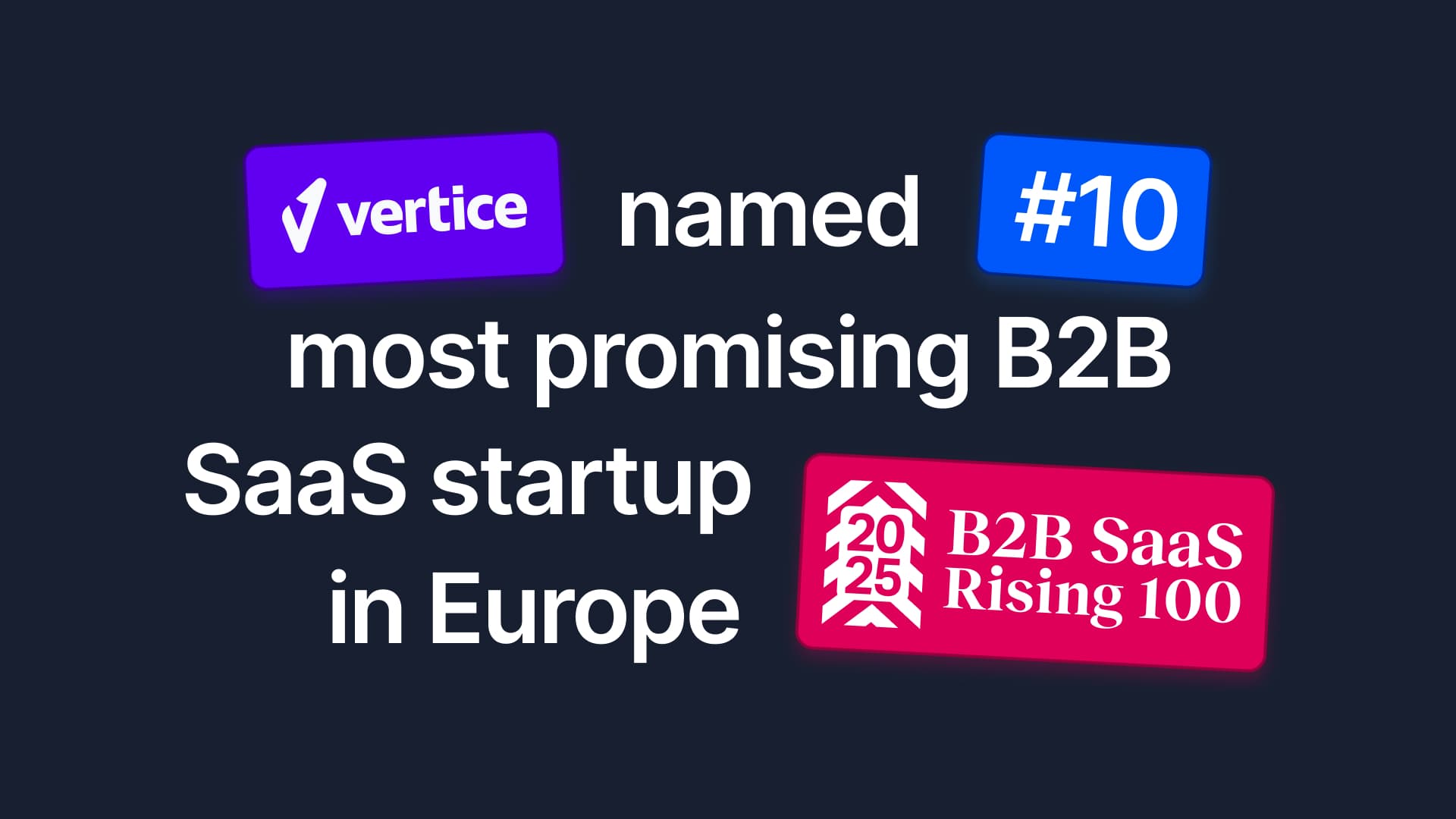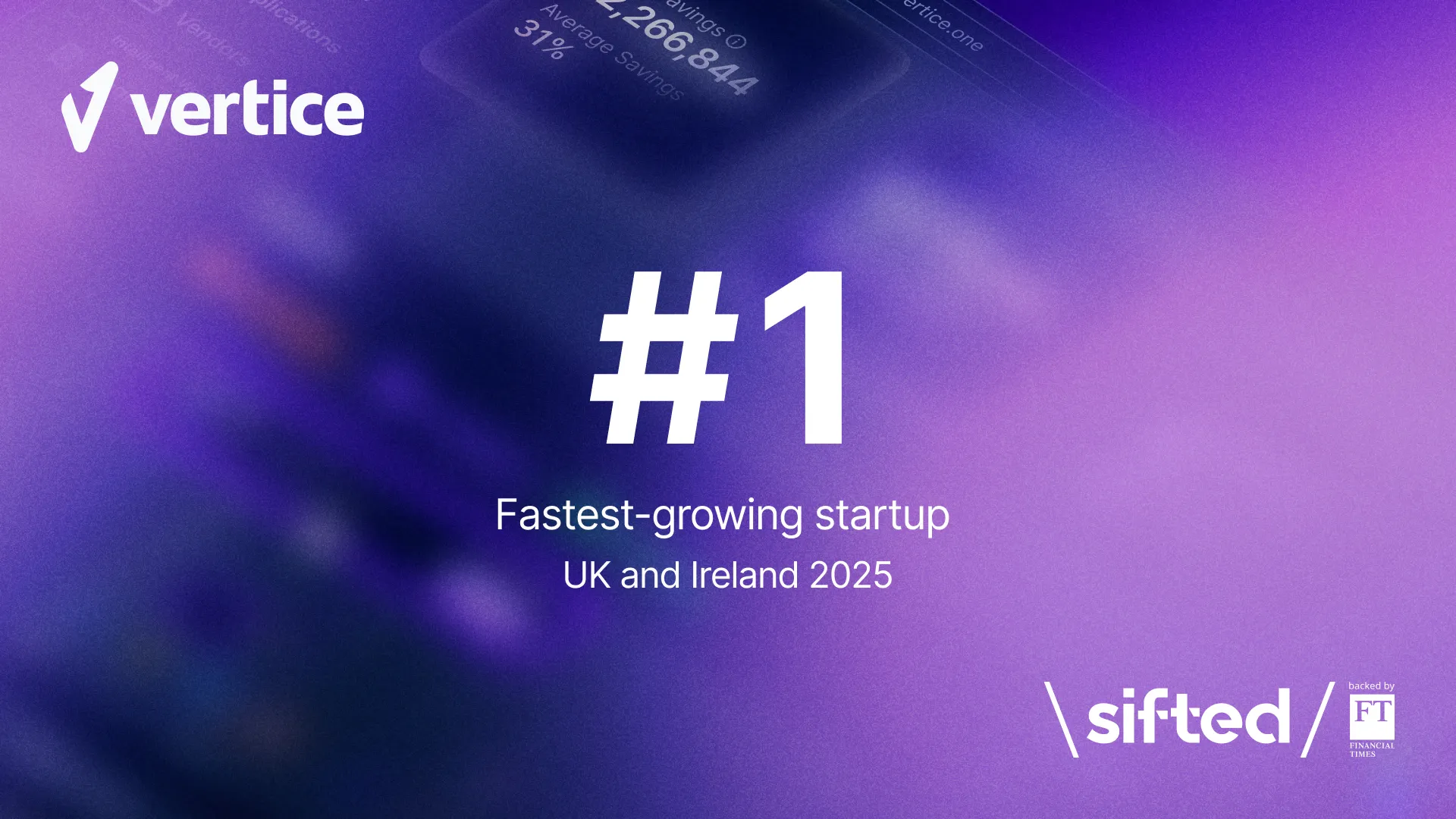Founding a company in a new industry: why we did it
Take a self-guided tour of the platform.
See why Vertice is trusted by top procurement leaders.
To set the scene, my brother and I have been working in B2B SaaS since 2002. I hate to admit we’ve been around this long, but that’s 20 years of seeing the cloud revolution from a front row seat. In that time it was called a bunch of different names, from ASP to on-demand, but the defining essence was that we would go to various prospects and customers and urge them to adopt a SaaS approach that would be cheaper for them to maintain, easier to keep up to date with new features, flexible to add or remove users, and cheaper than capital expenditures for on-prem hardware/software. It was an easy case to make — which is why for the last 20 years, corporate customers converted to SaaS in the thousands, adopting a wide variety of SaaS tools required to power their businesses.
While SaaS has delivered on its initial promises, it has come with its own added costs for the enterprise. The sheer volume of applications used by the modern enterprise has led to widespread budget over expenditure. Our data shows that a typical business is overspending by about 20% to 30% per year on SaaS. At the same time, managing this spend across multiple applications and geographies requires levels of time, effort and specialization that most finance and IT teams lack. They need help.
The picture becomes increasingly complex when you consider how a tech stack changes as a business grows over time. You need more and more applications and licenses as your team grows, and annual spend is continuously rising as you hit renewal periods throughout the year. So far, our test customers have an average of 78 separate live SaaS contracts that require renewals throughout the year. The current difficult economic environment makes this a critical time for enterprises to get their SaaS spend in check, with Gartner projecting annual SaaS spend to exceed $145 billion in 2022, up nearly 20% over 2021. But if lowering your SaaS expenses and managing constant renewals were simple tasks, you wouldn’t need outside help. In late 2021, we set out to help enterprises meet these challenges by forming Vertice.
Our mission was to reduce the cost and time taken up by endless SaaS renewals, procurement, approvals and management. Having been on both sides of the explosion in SaaS over the past two decades, as both a customer and as a vendor, we knew we had valuable insights and solutions to help enterprises with their SaaS purchasing challenges.
In going through the process of starting Vertice, we were faced with the very same questions our own customers are confronted with every day. What are the right systems for engaging with customers? How will payroll be managed? Which apps will be adopted for communicating internally? What about the privacy, security and storing of data? How long will it take to purchase all of this software and how much is it all going to cost? Did we choose the best value application, and is it the closest fit for our requirements? We’ve heard the same story time and time again from customers: it’s extremely time consuming for their finance teams just to keep up with their SaaS renewal schedules, leaving them with very little bandwidth to even attempt negotiating better renewal rates.
This takes us to a fundamental problem: There are massive disparities in the amounts businesses pay for the exact same services. You could be paying the sticker price for an application and still be overspending if your competitor across the street is paying 70% less per license. Why does this exact type of scenario happen all the time? SaaS prices are determined by SaaS vendors and, like all businesses, these vendors need to make a profit and often charge as much as they think the customer can pay. SaaS vendors also tend to be vague and, in many cases, secretive about their pricing. Only 75% of SaaS companies actually disclose their prices. This general ambiguity enables vendor sales reps to name their prices on a case-by-case basis. Even if your finance team had enough bandwidth to dedicate to your SaaS stack, they would still not be equipped to negotiate all of your contracts — because a critical element would still be missing: reliable, current, accurate, pricing data.
To that end, Vertice has gathered a database of over 13,000 SaaS vendors across more than 100 countries, with detailed product information and analysis on the most popular applications. Furthermore, we have amassed over 10,000 price points from multiple sources, and have negotiated over 10,000 contracts with a total value exceeding $300 million, for fast-growing tech companies and Fortune 500 multinationals. The second major problem is agency — from the outset we wanted to position Vertice in the buyer’s corner. We are committed to working only on behalf of the buyer so we can remain independent of the SaaS vendors and be 100% aligned with the interests of the finance and IT team at renewal. As previous SaaS vendors, we know how the market is structured — with vendors represented by a variety of VARs, partners, agents, affiliates and telcos all working to push and promote SaaS vendor offerings. These agents are paid by the vendor and usually only have their interests at heart. We think it’s about time that corporate buyers are equally represented by a professional partner — one that is backed by rich data, adhering to a rigorous purchasing methodology and framework.
With these principles in mind, this is how we built Vertice to work for your business:
- We negotiate with vendors on your behalf, leveraging our extensive data on real, up-to-date SaaS transactions, to get you the best deal on any contract.
- We simplify the entire SaaS purchasing process, freeing your finance and procurement teams to focus on your core business.
- We provide full visibility into your SaaS stack, all in one place, enabling you to make informed decisions. I’m thrilled to announce that Vertice is open for business.
We have worked hard over the last months to deliver an enterprise-class solution designed specifically for finance, procurement and IT teams, and we would love for you to give us a try. We are ready to help you save time and effort on endless SaaS renewals.
.webp)





.webp)